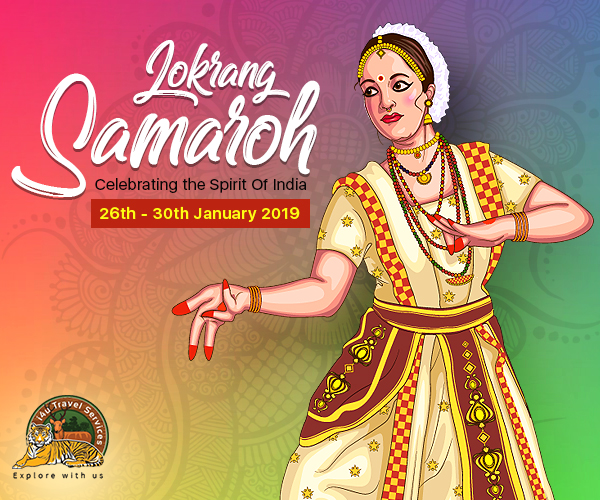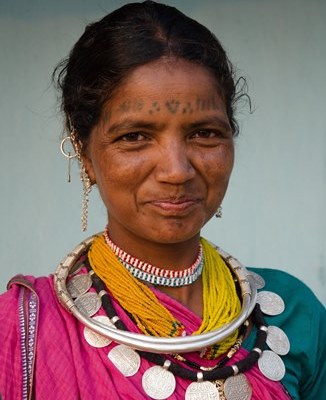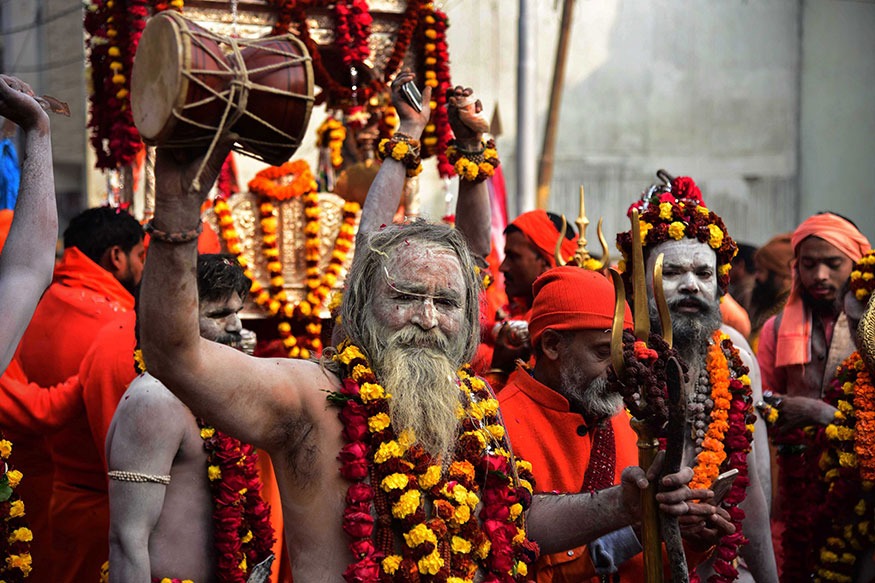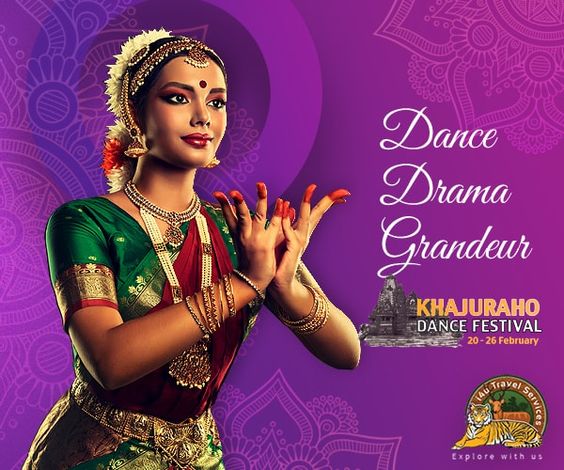
A performance at the National Drama Festival in Jabalpur. Madhya Pradesh’s native music adopts a number of unique styles and instruments, many of which are featured at the Khajuraho Dance Festival. Tribal idols depicts Hindu deities in quintessential folk style. One of the most well-known festivals of Madhya Pradesh is the Khajuraho Festival of Dances, held each year in the month of February. The age-old sculptures are brought to life, as India's brightest dancing stars gather to perform a plethora of classical forms. To have performed at the at the Khajuraho Festival of Dance is a real honor and a mark of great distinction for the dancers. The Khajuraho Dance Festival provide impetus to emerging talent as well as the fusion of classical forms with international dance countries. Performing against the temple’s sculptural masterpieces, the dancers pay a poetic tribute to the heritage of Khajuraho and the state of Madhya Pradesh.

Lokranjan festival of Madhya Pradesh
Another major dance event organized in Khajuraho is the Lokranjan festival. Usually held in the month of December, the festival is spearheaded by the Adivasi Lok Kala Academy in an endeavour to popularize the little-known forms of folk and tribal dance. Among the oldest and grandest music festivals of Madhya Pradesh is the Tansen Samaroh, organized annually in the month of December in Gwalior. Tansen, the Royal musician to Mughal Emperor Akbar, was known for his mastery over classical music. Music lovers gather during the festival, staying up nights listening to the masters of Indian classical music spin magic. The national Tansen Samman is awarded to performers for their achievements and contribution to the performing arts. Recipients of the esteemed award include sarod mastero Ustad Amjad Ali Khan, santoor player Pt. Shivkumar Sharma and Hindustani classical vocalist Ajay Pohankar.
The state also organizes the Allauddin Khan Samaroh during the month of February. The late Baba Allauddin Khan Saheb,a Padma Vibhushan awardee, was one of India's most renowned Sarod players of the 20th century. He established his centre of music in Maihar, located in the Satna district of Madhya Pradesh it is here that the festival is being organized since the 1970s. The Khajuraho festival features artists from across India, and showcases a variety of the country’s regional dance styles. Everything from Odissi, Bharatnatyam and Kathak to contemporary Indian dance is showcased at the festival, in honour of India's rich and diverse cultural legacy. A cultural exposition organised by the State Adivasi Lok Kala Academy, Lokrang Samaroh showcases folk and tribal dances, classical dances, art and craft, and cultural presentations from abroad. The Kumar Gandharva Samaroh is held in the month of April, just before the summer descends in all its glory. Kumar Gandharva was known for his distinct musical style. Though born and brought up in Karnataka, he spent most of his life in the town of Dewas near Indore where he practiced music. Named after the famous artist, the festival is organized each year since the early 1990s in Dewas on April 8th, his birth anniversary. Yet another festival promoting folk arts is held in January around The Republic Day celebrations. For two decades, the five-day Lokrang Festival has been celebrating folk and tribal arts in Bhopal. Each year, Lokrang focuses on a particular region of India, having exhibited the cultural wealth of different states across the country for more than two decades. The Khajuraho festival also features Art Mart, which brings together artists and craftsmen from around the world and gives them a platform to showcase their work. The aim of the Khajuraho festival is to promote the rich cultural heritage of India, and provide traditional Indian dancers a platform to gain exposure for their art. The festival is recognized worldwide by many international dancers and academies. Entry to the Khajuraho festival is free. Held on the banks of the Narmada, the Nimar Festival is considered one of a kind, thanks to its location - the Ahillya Ghat. The festival commemorates the artistic wealth of the region and provides a visual spectacle of theatrical and dance performances, and sonorous musical concerts. Paying homage to Mahakavi Kalidas, the Kalidas Samaroh in Ujjain promotes the best in theatre and arts, and Sanskrit literature. Since its inauguration in 1958, the festival has grown in scope as well as repeat. The stage is set each year with the inaugural show traditional play of Kālidāsa. Over seven nights, the festival celebrates classical dance forms, theatre and music. Among the major events of the festival is an exhibition of paintings and sculpture inspired by the work of Kālidāsa. Now in its sixth decade, the festival promotes India's classical languages as well as its traditional art forms.






